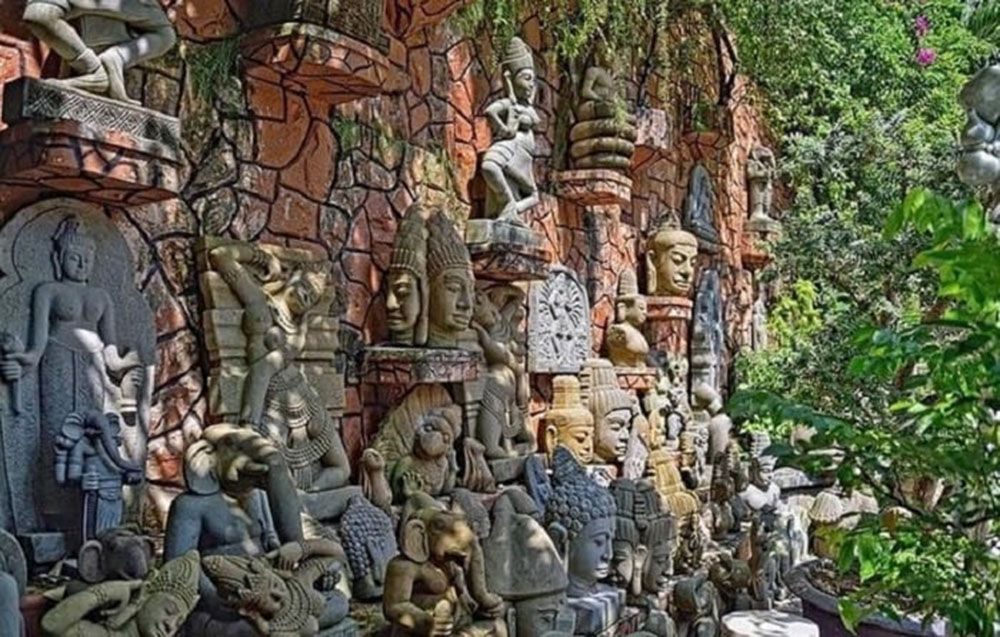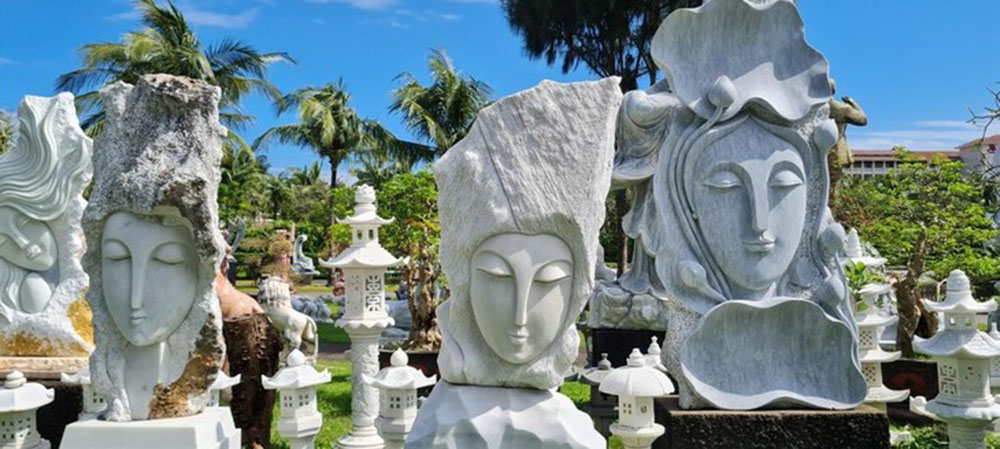
Non Nuoc stone carving village is an attractive place to visit in the journey to explore Da Nang tourism. After more than 300 years of existence and development, fine art stone works here have become unique artistic handicraft products and the pride of Da Thanh people.
1. Introduction to Non Nuoc fine arts stone village
Non Nuoc Stone Handicraft Village is a place for you to learn about extremely artistic products carved from stone. This interesting tourist destination attracts many visitors every year.
Where is Non Nuoc stone carving village?
Non Nuoc stone carving village is located right at the foot of the Ngu Hanh Son mountain range. This place is about 8 km from Da Nang city center and belongs to Hoa Hai ward, Ngu Hanh Son district, city. Danang.
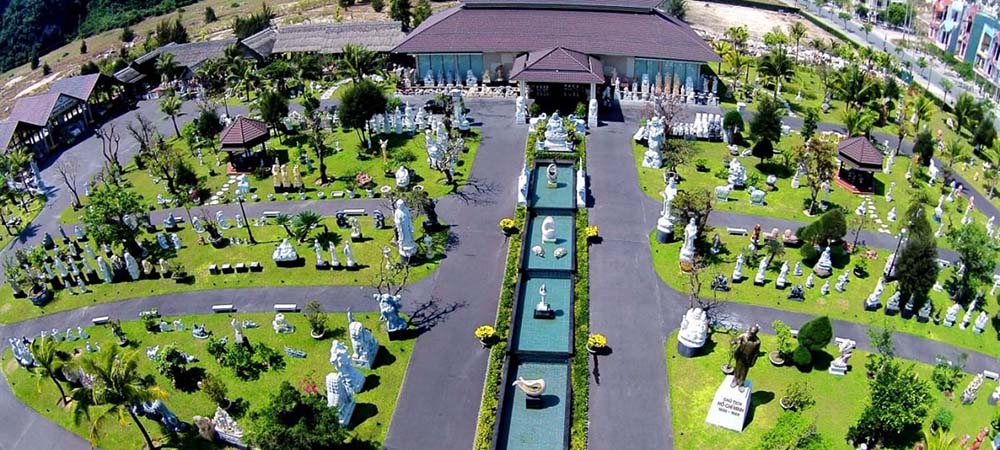
When you step into Non Nuoc stone village in Da Nang, you will feel like you are lost in the "land of stones" with large and small stones of all shapes and sizes. Each work has a different shape and is created by the talented and meticulous hands of a stonemason.
History of Non Nuoc Stone Fine Arts Village in Da Nang
According to the descriptions of Non Nuoc fine art stone village, the founder of this craft village is Huynh Ba Quat, a native of Thanh Hoa. History of the formation of Non Nuoc stone craft village:
- At the end of the 17th century - the beginning of the 18th century, the Da Nang Non Nuoc fine arts stone village was born. Huynh Ba Quat settled at the foot of Ngu Hanh Son mountain and discovered a cluster of marble mountains to create fine art stone works. After that, he passed the profession on to his children, grandchildren and people in the village.
- In the early 19th century, the Nguyen Dynasty built many mausoleums and palaces, so the Non Nuoc stone carving village (Ngu Hanh Son Da Nang) had the opportunity to develop. Many good workers were awarded the rank of Nine and were invited to travel all over the country.
- Currently, Non Nuoc stone carving village has more than 500 production facilities and is recognized as a national intangible cultural heritage.
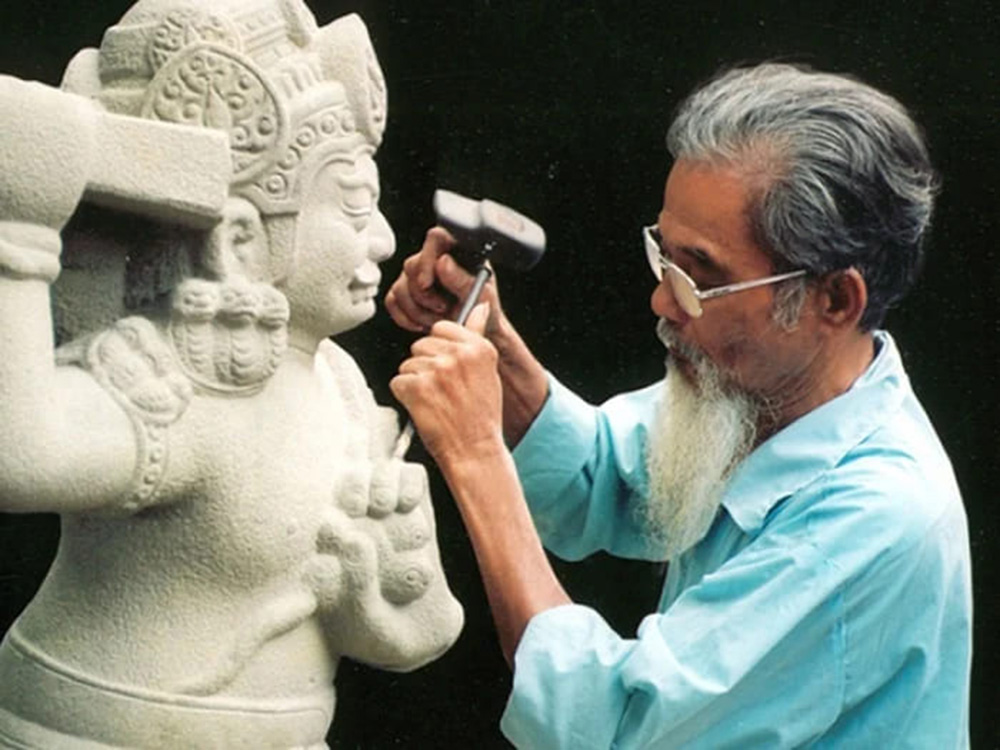
Admire masterpieces of high artistic value
Non Nuoc Ngu Hanh Son stone products are very diverse in shape, size, color, and type. Every year, this place produces more than 80,000 fine art stone products. The works of Non Nuoc stone carving village have many uses such as:
- Serving daily life including dishes, vases, teapots...
- Serving spiritual life includes tombstones, reliefs, Buddha statues, Arhat statues, Cham statues...
- Purchased as souvenirs include animal statues, portrait statues of Vietnamese and Western girls, statues of revolutionaries...
From a simple block of marble taken from the foot of Ngu Hanh Son mountain, through the talented hands of artisans, the stone blocks become smooth, shiny and reveal beautiful stone patterns. All works are skillfully and extremely delicately carved by stone village craftsmen. You can easily choose for yourself beautiful small items to preserve memories in a craft village more than 300 years old.
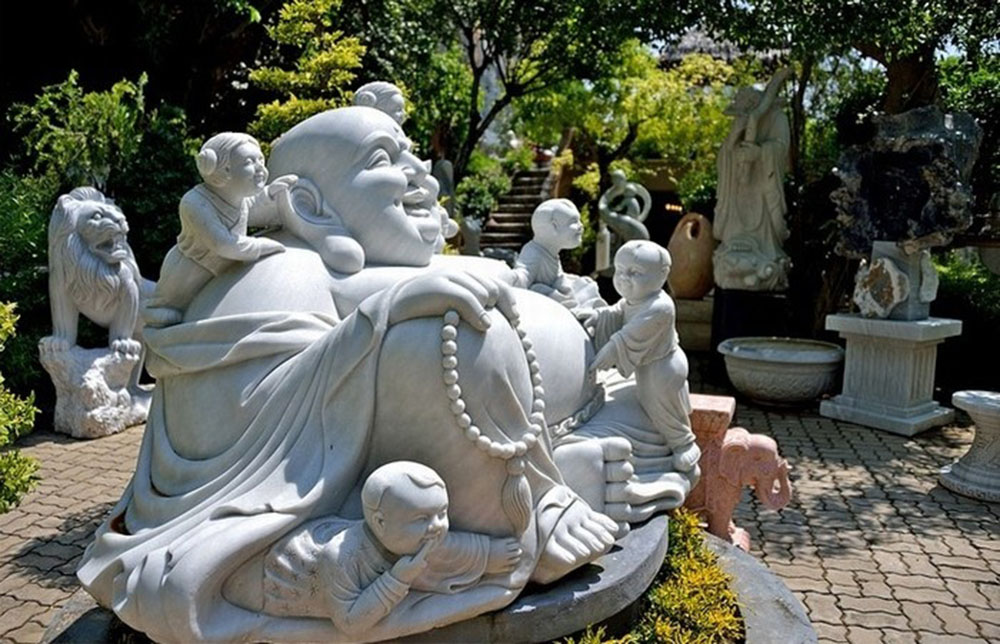
3. Explore ancient Champa and Vietnamese culture at Non Nuoc stone village
Non Nuoc Village is the intersection of two unique cultures - ancient Vietnamese culture and Champa culture. Fine art stone works have a special influence from the Champa culture in My Son sanctuary.
Hundreds of Champa statues with all styles and shapes are sculpted extremely delicately by artisans. These are statues of Yoni, Linga, Garuda bird or graceful dancer in the Apsara dance, statues of Indra, Nandin bull, Garuda bird... Besides, there are works representing ancient Vietnamese culture such as dragon sculptures. , turtles, and phoenixes on tombstones, pagodas, and mausoleums.
